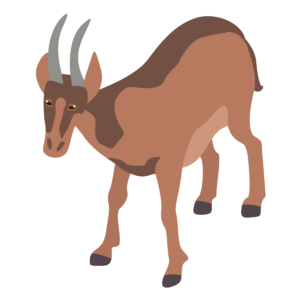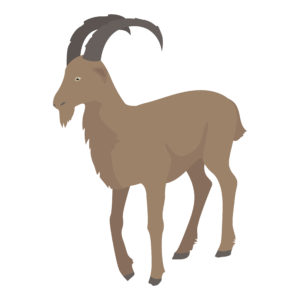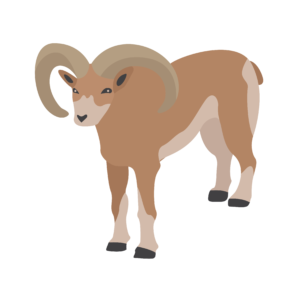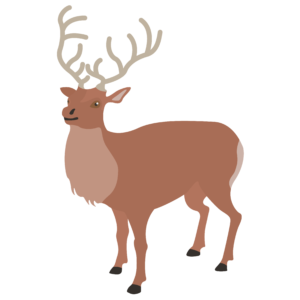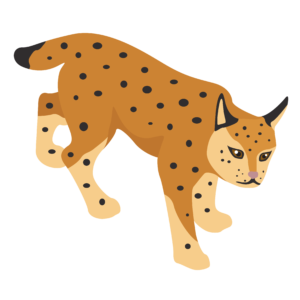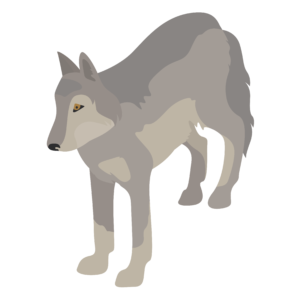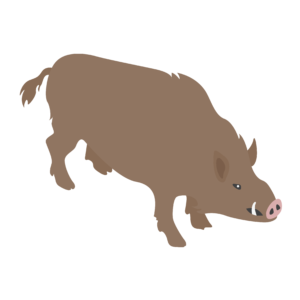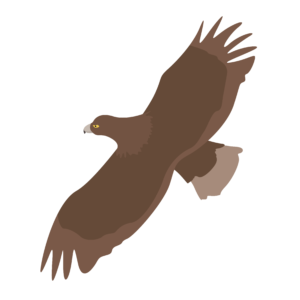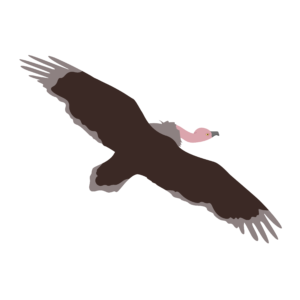The French Alps are one of the wildest and most under-developed areas of France and as such, a wide range of mountain wildlife can be found here. Due to its predominantly alpine landscapes, it is home to chamois, mouflon, ibex and marmots, however wolves are also well-established and there have even been rare sightings of lynx. If you love nature and want to immerse yourself in the world of Alpine wildlife, read on!
Chalet Floralie's Guide to Mountain Wildlife
The Curious Skier
20 April 2021
No Comments
Chamois
An alpine goat-antelope species native to mountains in Europe, Chamois live at moderately high altitudes and have adapted to living in precipitous, rugged and rocky terrain. Chamois use speed and stealth to space predators and can reach speeds of up to 50km/h! Living in the mountains, they have also evolved to jump serious distances over crevasses – in some cases up to 6 metres!
Ibex
Ibex (also known as bouquetin) were hunted to extinction in the region in the 1960s but have since been successfully reintroduced by the Ecrins National Park. The ibex is a species of goat that is an excellent climber and its preferred habitat is the rocky region along the snow line above alpine forests, where it occupies steep, rough terrain at elevations of 1,800 to 3,300 metres. They can be recognised by their large, backwards-curving horns with numerous ridges along their length.
Marmots
Marmots are large ground squirrels that live in burrows in mountainous areas and hibernate during winter. Highly sociable they use loud whistles to communicate with one another, especially when alarmed. They mainly emerge from their burrows to feed in the mornings and evenings, as they are not well suited to heat. When the weather is suitable, they will consume large amounts of food in order to create a layer of fat on their body, enabling them to survive their hibernation period during winter months.
Lynx
A species of wildcat, the lynx was also hunted out of the area in the 1930s. It has always had a presence in eastern Europe and gradually, like the wolves it has migrated in search of new territories. The lynx inhabits high altitude forests with dense cover of shrubs. Although it hunts on the ground, it can climb trees, swim and catch fish. Its large paws are padded for walking on snow. A very solitary and discreet animal, its presence is only confirmed by rare sightings and animal attacks.
Wolves
Wolves too were hunted out of the Alps in the 1930s but from the 1990s have started to re-establish themselves here, coming over the border from Italy. The Alps, with its wild and unspoilt mountains rich in chamois, mouflon, deer and other prey make it a perfect habitat for this species of wild dog and more than half of the entire French wolf population are thought to be concentrated in the Southern French Alps. Sightings were rare but are becoming more common as the wolves are coming down into the valleys looking for easy catches, for example, farm animals.
Wild Boar
A very common sighting in the Alps, and especially at altitudes under 2,000 metres, Wild Boar are extremely hardy, adaptable and resistant and also very intelligent. Due to their success, they are considered a problem in some areas as they trample and eat crops and as such are hunted during the months of September to January to keep numbers down. Social animals, they are omnivorous with a diet equivalent to humans and will dig for roots and worms and eat rodents, lizards, berries and pretty much anything else they can find!
Golden Eagles
These enormous birds use their agility and speed combined with extremely powerful feet and massive, sharp talons to snatch up a variety of prey, including hares, rabbits, marmots and other ground squirrels. Golden Eagles have territories as large as 200 km2 and build large nests in high places to which they may return for several breeding years. Golden Eagles can reach spectacular speeds of up to 240 – 320 km per hour (150 – 200 mph) when diving after prey and are classed as one of the fastest animals on earth.
Vultures
Another bird of prey that is commonly found in the area is the bearded vulture, which lives and breeds on cliff faces or in canyons or gorges. Vultures rarely attack healthy animals but may kill the wounded or sick. When the hide of a carcass is too thick for its beak to open, it waits for a larger scavenger to eat it first. They gorge themselves when prey is abundant, until their crop bulges and sit to digest their food. These birds are of great value as scavengers, but seem to prefer desolate, lightly-populated areas where predators who provide many bones, such as wolves and Golden Eagles, have healthy populations.
Chalet Floralie, Rue des Grangeraies, Saint Martin de Belleville, 73440 France
bookings@skifloralie.com
Tel: +44 7786 543623
© Chalet Floralie 2024 • All Rights Reserved Ski Floralie Limited - Company No: 06474292
Privacy Policy • Cookie Policy • Developed by The DM Lab

